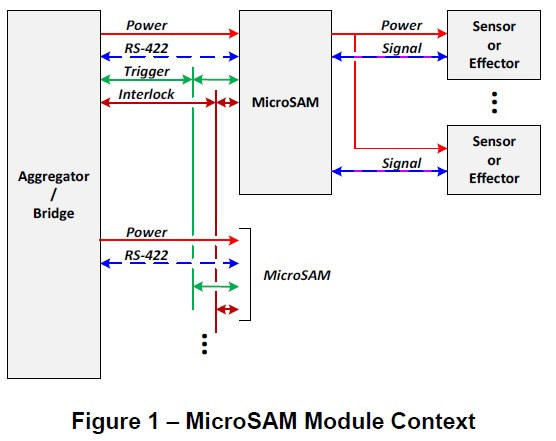There are plenty of system-on-module standards, but those mostly target application processors such as Intel/AMD x86 processors or Arm Cortex-A based SoCs.
PICMG has now added a new IIoT-related open standard with MicroSAM specifying a 32x32mm module for microcontrollers and industrial IoT sensor nodes.
MicroSAM standard highlights:
- Reliable RS422 industrial-grade communications
- PWM output for motion control applications
- Direct connectivity to a variety of sensor types (analog voltage, analog current, digital)
- Low power consumption
- Power filtering and signal conditioning for embedded installations
- Dimensions – 32mm x 32mm
- Latching connectors for secure connectivity
- Full industrial operating temperature range from -40°C to +85°C
One of the advantages often cited for traditional SoMs is that customers don’t have to take care of the complex layout around the processor and RAM, and can simply create a 2-layer baseboard to insert the 6-layer SoM into it. This lowers the development costs and time-to-market. But it’s not really an argument that can be made for microcontroller board, and instead, PICMG highlights three main benefits of the new MicroSAM standard:
- Sensor vendors can create smart sensors without having to manufacture the control circuitry and/or software by purchasing these components from PICMG-compliant suppliers.
- Controller suppliers can create smart sensors or smart-sensor components that are interoperable with other suppliers.
- Accelerate the adoption of smart-sensor technology through open-specifications and interoperability.
The standard is also said to define requirements for common firmware features, common data model, network architecture, and integration with the Distributed Management Task Force’s (DMTF) Redfish management API.
If you want to find out more, you can download the specifications if your company is a PICMG member, otherwise you’ll need to purchased the specs for $750. More details about MicroSAM standard can be found on PICMG website.

Jean-Luc started CNX Software in 2010 as a part-time endeavor, before quitting his job as a software engineering manager, and starting to write daily news, and reviews full time later in 2011.
Support CNX Software! Donate via cryptocurrencies, become a Patron on Patreon, or purchase goods on Amazon or Aliexpress





